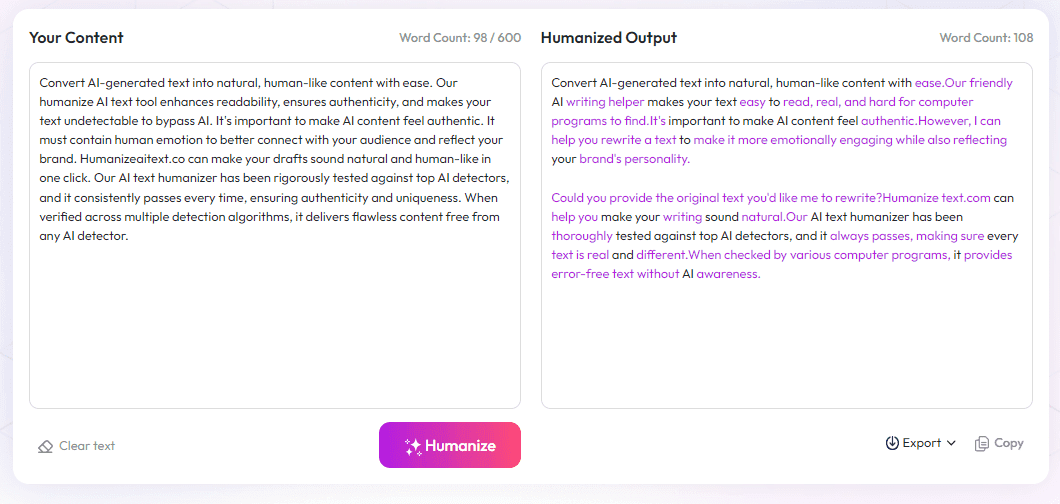Table of Contents
Hey there! You’ve probably wondered if your ebooks are accessible for everyone, right? Sometimes, making sure your ebook can be enjoyed by all readers feels overwhelming or tricky to navigate.
But don’t worry — keep reading, and I’ll show you simple ways to make your ebooks compliant with accessibility rules. That way, everyone can easily access and enjoy your content without frustration or barriers.
In just a few minutes, you'll get the basics on what accessibility compliance means and how to keep your ebooks in line with the rules. Let’s get started!
Key Takeaways
Key Takeaways
- Making your eBook accessible means designing it so everyone, including those with disabilities, can read and navigate it easily. Use formats like EPUB 3, add descriptive tags and alt text, and ensure good color contrast. Platforms should support adjustable features like font size and background color. Regular audits help find and fix issues like missing headings or untagged images.
- The upcoming European Accessibility Act requires all eBooks sold in the EU to meet accessibility standards by June 2025. Non-compliance can lead to fines and barriers in a large market. Publishers outside the EU must upgrade existing titles and incorporate accessibility into their workflows to stay compliant.
- Common hurdles include inconsistent platform support, complex tagging requirements, and errors from automated tools. Running regular accessibility checks and training teams on standards helps avoid costly fixes later. Incorporate accessibility checks from the start to stay compliant and provide a better reading experience.
- Empowering readers with features like adjustable fonts, contrast settings, and clear image descriptions improves usability. Testing these features and gathering feedback ensures continuous improvement and makes your eBook welcoming for all users.
- Future developments include smarter tools with AI, more automation, and platform features that support accessibility better. Staying updated on new standards and participating in industry conversations helps ensure your eBooks remain accessible and relevant as technology advances.

Making your eBook accessible and compliant with standards like WCAG is not just a legal obligation—it's a way to reach more people and increase your readership.
At its core, ebook accessibility compliance means designing digital books that can be read and navigated by everyone, including people with disabilities.
Use accessible formats like EPUB 3, which is built to support assistive technologies such as screen readers. For example, EPUB 3 allows for proper tagging of headings, lists, and other structures that screen readers rely on.
Ensure that all text has sufficient contrast against its background, making it easier for users with visual impairments to read your content. Many platforms support customization, allowing readers to change font size, background color, and font style—features that significantly enhance usability.
Incorporate descriptive metadata—like alt text for images and logical reading order—to help assistive tools interpret your content correctly. Metadata makes your ebook more discoverable and easier for all users to understand.
Another critical factor is providing synchronized text and audio when possible, which benefits those who prefer or need audio support. Also, avoid Digital Rights Management (DRM) restrictions that can block accessibility features or prevent content from being tailored to individual needs.
While many publishers are aware of these principles, less than 37.4% currently produce accessible eBooks, despite upcoming regulations like the European Accessibility Act requiring accessibility for all eBooks sold in the EU by June 2025.
Common accessibility issues found during audits include missing heading structures, insufficient color contrast, and untagged images, which hinder screen reader effectiveness. For example, a project might have an average of 74 issues, with 56 being high risk, revealing how widespread accessibility gaps can be.
Supporting features on eBook platforms, such as adjustable font size or background color, can help address many of these issues, making your ebook not only compliant but also more user-friendly.

9. The Impact of The European Accessibility Act on eBook Publishing
The European Accessibility Act (EAA), set to take effect in June 2025, has huge implications for publishers selling eBooks in the EU.
It mandates that all eBooks sold within the EU must meet accessibility standards, which means publishers have to start paying close attention.
This law aims to make digital content more inclusive, ensuring people with disabilities can access books just like everyone else.
For publishers outside the EU targeting European readers, compliance isn’t optional—it’s a legal requirement.
Failing to meet these standards could lead to hefty fines and barriers to entering one of the world's largest eBook markets.
To prepare, publishers should review their current titles, identify gaps in accessibility, and upgrade content accordingly.
Tools like interactive eBook creators and accessibility checkers can help streamline this process.
10. Common Challenges and How to Overcome Them in Accessibility Compliance
Despite good intentions, many publishers face hurdles when trying to make their eBooks compliant.
Fragmentation across platforms means accessibility features aren’t always consistent, which can be frustrating.
Implementing proper tagging in EPUB 3 can be a headache if you're new to it, but taking the time to learn these standards pays off.
AI-generated content sometimes introduces accessibility debt—errors or omissions that can be costly later.
One way to handle these challenges is to run regular accessibility audits using tools like AutoCrit or Grammarly alternatives.
Building accessibility into your workflow from the beginning helps prevent costly fixes down the line.
Training your team on accessibility principles can make a big difference in maintaining compliance.
11. How to Conduct an Accessibility Audit on Your eBook
Before publishing or updating, it's smart to run an accessibility check on your eBook.
Start with automated tools that scan for missing tags, contrast issues, or untagged images—think of them as your first line of defense.
Follow up with manual reviews—navigate your book using a keyboard or a screen reader to see if it’s usable without visual cues.
Look for common issues like missing headings, inconsistent reading order, or unclear image descriptions.
Document findings carefully and prioritize fixes based on risk level, tackling high-risk issues first.
Tools like AutoCrit can help identify errors you might miss otherwise.
Regular audits, especially after updates, keep your eBook compliant and user-friendly.
12. Making Accessibility Features User-Driven and Customizable
Giving readers control over how they experience your eBook enhances accessibility and satisfaction.
Features like adjustable font sizes, background colors, and text spacing empower users to tailor the content to their needs.
Look for platforms that support customization options—many standard readers do this inherently.
For example, ensuring your EPUB supports a high contrast mode can make a big difference for users with visual impairments.
Consider adding descriptive alt text for images and audio descriptions where possible.
This not only boosts compliance but also creates a better reading experience for everyone.
Test these features yourself and seek feedback from users with disabilities for continuous improvements.
13. Future Trends in Ebook Accessibility and Compliance
The future of eBook accessibility will likely see smarter tools, more automation, and better platform support.
Advancements in AI could help generate automatic alt text and improve tagging accuracy, reducing manual effort.
As regulations tighten, compliance may become a standard part of publishing workflows rather than a last-minute fix.
More platforms will offer built-in accessibility features, pushing the entire industry toward inclusivity.
Keeping an eye on emerging standards and tech like voice recognition can help you stay ahead of the curve.
Participating in industry conversations about best practices ensures your eBooks will meet evolving expectations.
Regular training and audits will be key to keeping your content accessible as technology advances.
FAQs
Ebook accessibility compliance means ensuring digital books are usable by all, including people with disabilities. It involves following standards that make content accessible through screen readers, keyboard navigation, and other assistive technologies.
Anyone creating, publishing, or distributing ebooks for public or educational use should follow accessibility rules, especially organizations receiving government funding or serving diverse audiences to ensure inclusivity.
Key rules include providing text alternatives for images, ensuring keyboard navigation, using clear headings, and maintaining templates that support screen readers to make ebooks accessible for all users.



